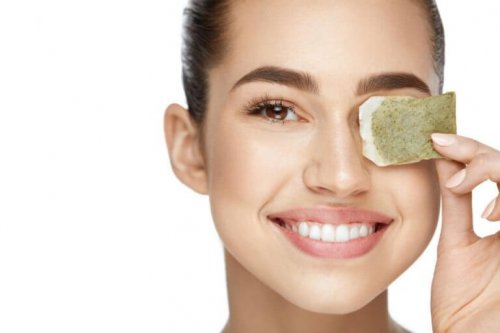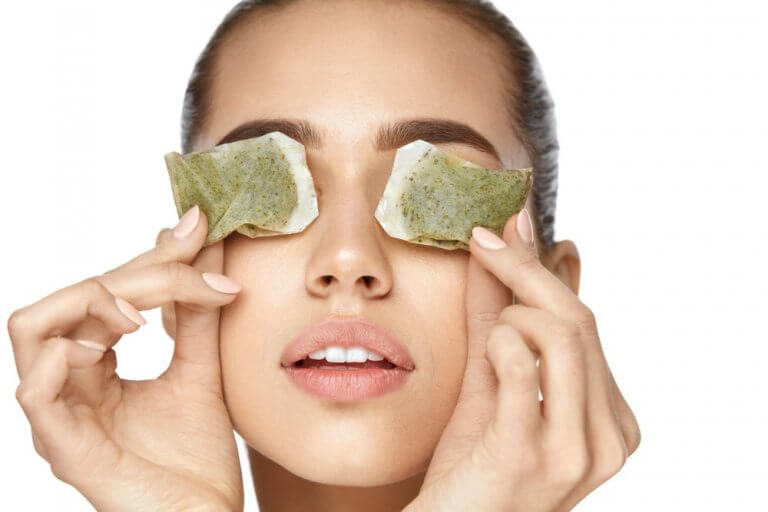How to Use Tea Bags to Improve Circles Under Your Eyes

Did you know that you can use tea bags to help relieve any eye puffiness or bags?
Many people have puffy eyes or dark circles under their eyes due to stress, not sleeping enough, or even genetics. However, most people don’t like having bags or dark circles under their eyes and see it as something that affects their natural beauty.
If you suffer from puffiness or dark circles under your eyes, then keep reading!
This article will explain how to use different tea bags to rid you of your eye problems. These techniques can also help you look more alert and awake for an upcoming interview or date.
Tea Bags and Beauty

Caesalpinia pulcherrima Tea Bags for Inflammation
Caesalpinia pulcherrima, also known as peacock feather or Barbados Pride, can help treat various eye afflictions. For example, if you have bags under our eyes because of not sleeping enough, you can use these tea bags to help.
The anti-inflammatory properties of this herb not only help with your eyes, but they also help lower any inflammation of the liver, lower a fever, and treat bronchitis and asthma.
- To use these tea bags to reduce circles or bags under your eyes, first make tea like normal, and then put a warm or cool tea bag on each eye.
- Leave them there for about 15 minutes, or longer if your bags are really bad.
Also read: Natural Remedies for Dry Eyes
Chamomile Tea Bags

While chamomile can help with eye conditions, it is important to be careful when using it because some people are sensitive or allergic to the plant.
In the event that you’re certain that you don’t have any allergy or sensitivity to chamomile, you can benefit from using it.
However, just a reminder—when using tea bags, make sure that they’re well sealed without any holes to make sure that nothing enters the eye. If a bit of the tea enters your eye (like with any other object), it can cause an infection.
How can you benefit from using chamomile?
Chamomile acts as an anti-inflammatory that will reduce any puffiness or bags under the eyes and help make you look more awake and alert.
Discover: Chamomile and Other Remedies that Improve Digestion
Fennel Tea Bags
Fennel tea bags can be used to alleviate tired eyes caused by staring at a computer screen for many hours a day or from inadequate sleep.
They can also help with the following problems:
- Conjunctivitis (also known as pink eye): Applying a tea bag to each closed eye for no longer than 10 minutes can help reduce irritation and itchiness caused by conjunctivitis. However, remember that this infection is very contagious.
- Blepharitis: This is an inflammation that occurs at the edge of the eyelids. Symptoms usually include inflammation, dryness, and tearing. Fennel tea bags can alleviate these symptoms and also help with sties.
Advice for Dark Circles and Bags Under the Eyes

As we have seen, tea bags can help with dark circles, eye bags, and even conditions like conjunctivitis. Here is one final tip for treating dark circles and eye bags. First, you need to cool the tea bags by placing them in the refrigerator.
The cold stimulates circulation and helps drain the eye area of any liquids. Just leave the tea bags in the refrigerator for a few minutes and then put one cold tea bag over each eye and let sit for ten minutes.
Do you usually have dark circles or eye bags? Do you suffer from puffiness or conditions like conjunctivitis?
If so, we hope that these simple remedies can help you, but remember to be very careful with the chamomile tea and make sure that you do not suffer from any allergies or sensitivities. Also, remember to make sure that each tea bag is well sealed so that nothing gets in your eyes.
Go ahead and take 10 minutes out of your day to relieve your eyes and relax with these tea bag remedies!
All cited sources were thoroughly reviewed by our team to ensure their quality, reliability, currency, and validity. The bibliography of this article was considered reliable and of academic or scientific accuracy.
- Castro-Muñoz, Rosario, Castro-Cepero, Viviana, & Ceroni-Stuva, Aldo. (2015). Fenología de Caesalpinia pulcherrima (L.) Sw. en un jardín botánico urbano de Lima, Perú. Ecología Aplicada, 14(2), 201-209. Recuperado en 15 de febrero de 2019, de http://www.scielo.org.pe/scielo.php?script=sci_arttext&pid=S1726-22162015000200012&lng=es&tlng=es.
- Fano Machín, Yey. (2016). Complicaciones de la Blefaritis. Presentación de caso. Revista Habanera de Ciencias Médicas, 15(1) Recuperado en 15 de febrero de 2019, de http://scielo.sld.cu/scielo.php?script=sci_arttext&pid=S1729-519X2016000100010&lng=es&tlng=es.
- Rodríguez Aguado, O. (2001). Un acercamiento a la medicina popular en Ubrique (1996-1997). Cultura de los cuidados, Año V, n. 10 (2. semestre 2001); pp. 46-62.
- Rojas Mejía, Á. M. (2007). Plantas medicinales en el manejo de enfermedades oculares.
This text is provided for informational purposes only and does not replace consultation with a professional. If in doubt, consult your specialist.








